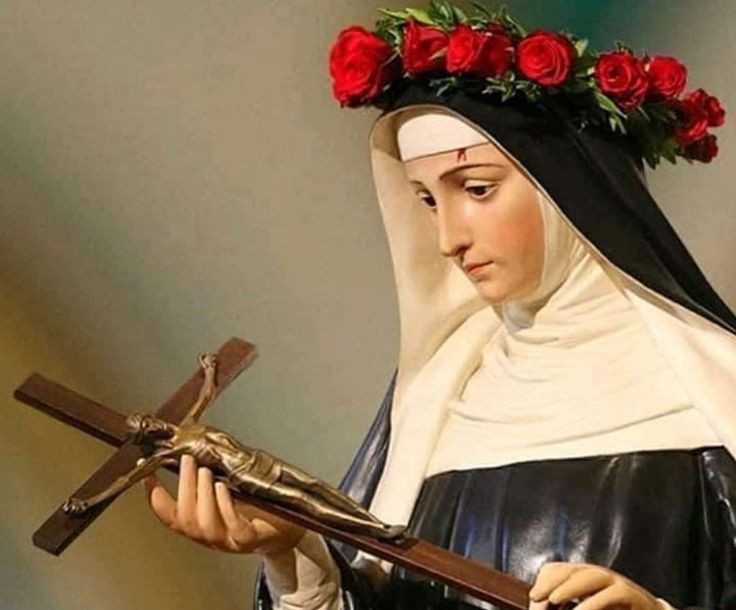

In Western Europe, the best-known version of a miracle of the roses concerns Saint Elizabeth of Hungary (also called Elisabeth of Thuringia), the daughter of King Andrew II of Hungary, who spent most of her life living with her in-laws in Germany (a ruling family of Thuringia), who kept court at Wartburg Castle.
5 MIRACLES OF ST RITA SERIES
The thirteenth century Saint Dominic is credited with the institution of the Rosary, a series of prayers to the Virgin, symbolized by garlands of roses worn in Heaven. Cathedrals built around this time usually include a rose window, dedicated to the Virgin, at the end of a transept or above the entrance. With the rise of Marian devotion and the Gothic cathedral in the twelfth century, the image of the rose became even more prominent in religious life. Saint Bernard of Clairvaux compared her virginity to a white rose and her charity to a red rose. Thus the Blessed Virgin is often referred to as the 'rose without thorns', since she was immaculately conceived. The third-century Saint Ambrose believed that there were roses in the Garden of Eden, initially without thorns, but which became thorny after the fall, and came to symbolize Original Sin itself. The most common association of the rose is with the Virgin Mary. By the twelfth century, the red rose had come to represent Christ's passion, and the blood of the martyrs. The mystic rose appears in Dante's Divine Comedy, where it represents God's love.

It became a symbol in religious writing and iconography in different images and settings, to invoke a variety of intellectual and emotional responses. The rose is even a symbol for Christ himself, as seen in the German Christmas song, "es ist ein 'Rose' entsprungen." ĭuring the Middle Ages the rose was cultivated in monastery gardens and used for medicinal purposes. During the Middle Ages, the rose became an attribute of many other holy women, including Elizabeth of Hungary, Elizabeth of Portugal and Casilda of Toledo, and of martyrs in general. One of her titles in Catholic Marian devotion is Rosa Mystica or Mystic Rose. The rose was a privileged symbol for Mary, Queen of heaven and earth. He illustrated the parallelism already made by Justin Martyr (around 150) and developed it in a deep poetic and doctrinal liturgical teaching in his Easter song, Carmen paschal.

This contrast inspired the Christian Latin poet Coelius Sedulius, who wrote (between 430 and 450) a very elaborate comparison between Eve, our first mother, and Mary, the Mother of Jesus our Savior. This symbolism attained a deeper complexity when contrasted with the rose's thorns. In Rome the feast called "Rosalia" was a feast of the dead: thus the flower referred to the next world. It also spoke of the fleetness of life, and therefore of death. In Greco-Roman culture the rose's symbolic qualities represented beauty, the season of spring, and love. In the Latin West the symbolism of the rose is of Greco-Roman heritage but influenced by and finally transformed through Latin biblical and liturgical texts.


 0 kommentar(er)
0 kommentar(er)
